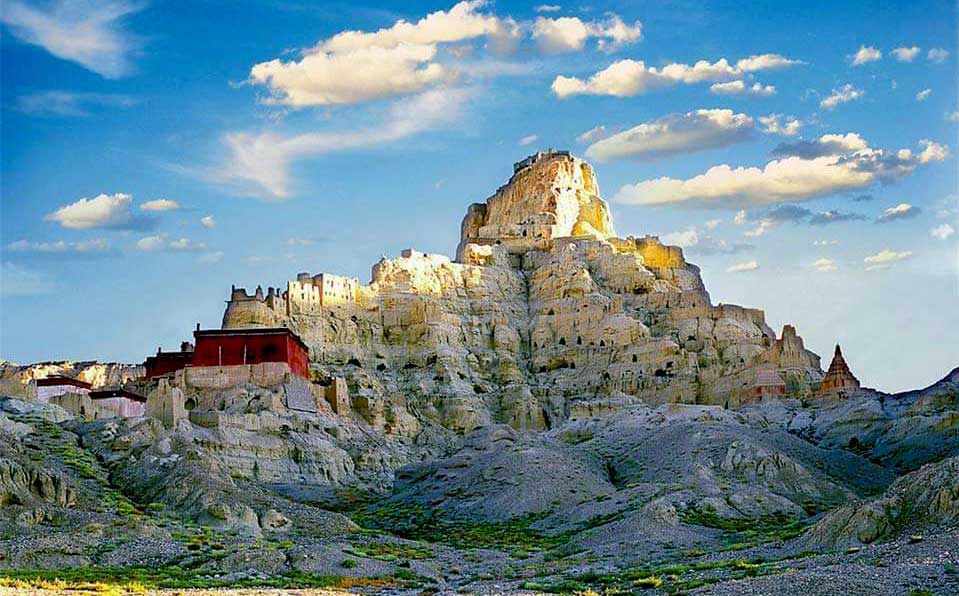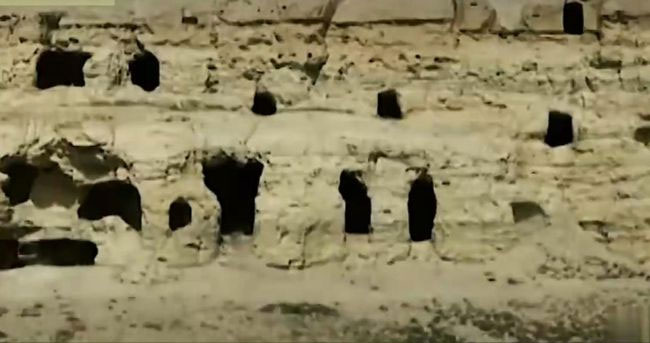Tibet is a place with a rich cultural history. Here lies Mount Kailash, renowned as a famous Buddhist sacred site and a holy mountain in the region. Many people come to visit, but no one has ever climbed it, leaving this mountain shrouded in mystery.
The Mountain of Mysteries
In the past, an explorer accidentally captured a photograph of the mountain. The golden peak in the image added to its mystique. Over time, a legend began to spread. It is said that within this mountain lies a golden palace belonging to a millennia-old dynasty, visible only to the unfortunate.
When experts heard this rumor, they were eager to verify it for themselves. Little did they know that what lay inside would truly shock them!

Tibet is a place with a rich cultural history. (Photo: Explore Tibet).
When the expedition team reached the foot of the mountain, they did not see the golden peaks as described in the legend and photographs. What they observed were ordinary peaks, until dusk when they suddenly turned golden. Later, experts discovered that the golden light was simply the sunlight at sunset.
To explore what lay within the mountain, the expedition team daringly ventured inside and unexpectedly found a tunnel leading to a secret space. Upon investigation, they noted that the architecture resembled a defensive military base. They even uncovered several bunkers and weapons hidden within.
Terrifying Discoveries Inside the Cave
After researching historical data, the expedition team learned that this place was once home to a nation known as the Xiang Hung. However, upon studying the texts, experts found that the existence of this site did not align with the timeline of the ancient people.
Ultimately, they discovered that the true owners of this ancient relic were a mysterious nation – the Ancient Gak Kingdom. According to records, this kingdom had a total of 16 kings, thrived immensely, but suddenly vanished overnight.
There are very few records about this country in historical texts. However, interestingly, there is documentation stating that the founding king of Gak was a prince of Xiang Hung.
It turns out that the former king of Xiang Hung had three sons. Fearing they would vie for power, he divided the territory into three parts, one of which became the later Gak.
But after the old king’s death, the three sons were not at peace; conflict erupted, and they hastily prepared weapons for battle.

Bunkers prepared for warfare. (Photo: 163).
As the expedition team ventured further, they discovered a mysterious cave emitting a strange smell reminiscent of decay. Upon entering the cave, they found numerous artifacts. The cave was not narrow as it appeared from the outside but rather spacious, with interconnected rooms distributed within.
Next, what terrified those present was a large pile of bones. The Ancient Gak Kingdom had disappeared for thousands of years, and the age of these skeletons was equally ancient. However, from the outside, it was evident that they had not fully decomposed. Another point of interest was that the bones here lacked skulls.
The reason these skeletons have been preserved for so long is due to the dry, hot air in the cave. When investigating the surrounding environment, experts found a river near the cave, yet the air inside remained very dry.
This is because the cave is situated higher than the ground and is exposed to the northwestern winds year-round, with little rainfall, and the cave entrance faces west. As a result, sunlight directly enters the cave, maintaining a dry atmosphere.


















































